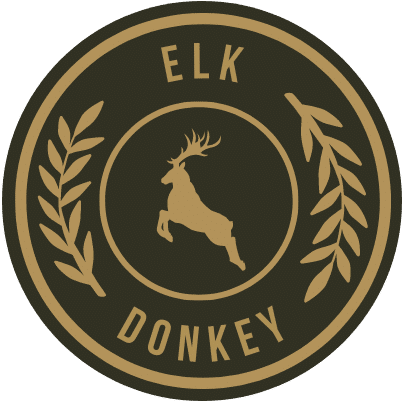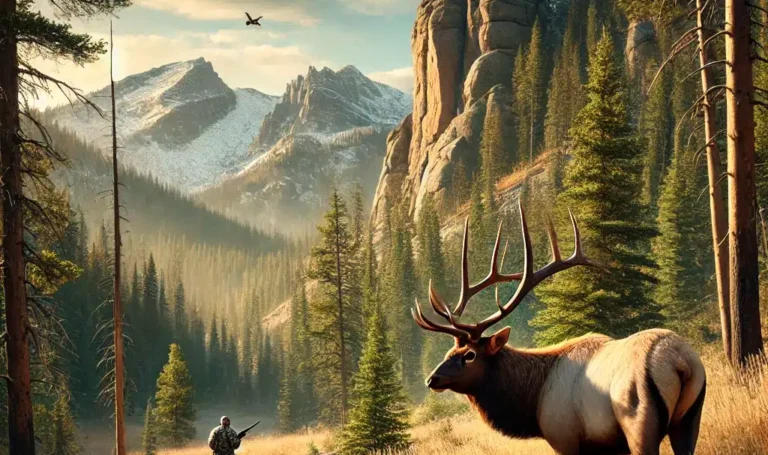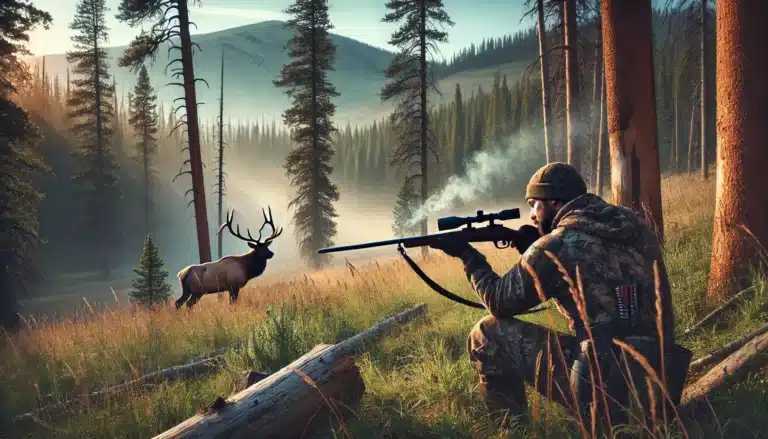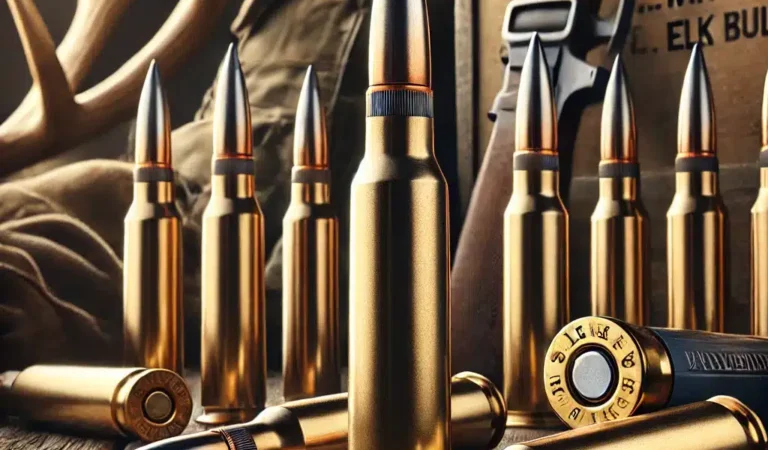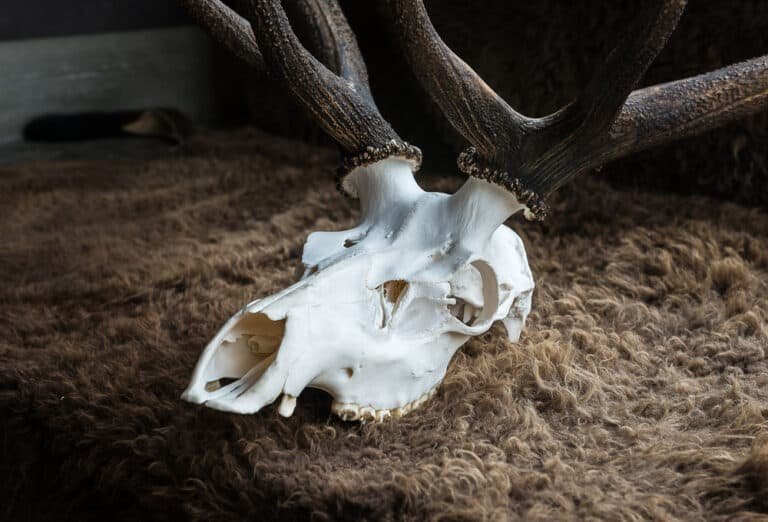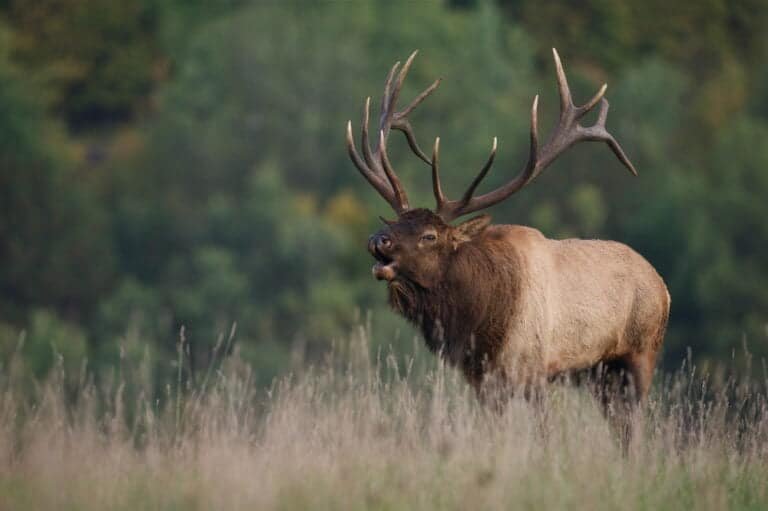Best Optics for Elk Hunting in 2025: Field-Tested Top Picks
The bull elk stood at 425 yards across the canyon – a shot I’d dreamed of for years. But as I raised my rifle, the cheap scope’s clarity failed me in the early mountain light. That’s when I learned the hard way: your optics can make or break an elk hunt.

Choosing the right optics for elk hunting isn’t just about buying the most expensive gear. It’s about finding the perfect balance of clarity, durability, and functionality that matches your hunting style and terrain. After testing dozens of scopes across three hunting seasons and interviewing 20+ experienced elk hunters, we’ve compiled a real-world guide to the optics that perform when it matters most.
Whether planning your first elk hunt or upgrading your current setup, this guide will help you make a confident choice that won’t let you down when that once-in-a-lifetime bull steps into view. We’ll cover everything from budget-friendly options that get the job done to premium glass that can help you spot and track elk in the most challenging conditions.
Here’s what you need to know about choosing the best optics for elk hunting based on actual field experience rather than just product specs.
Understanding Elk Hunting Optics Basics
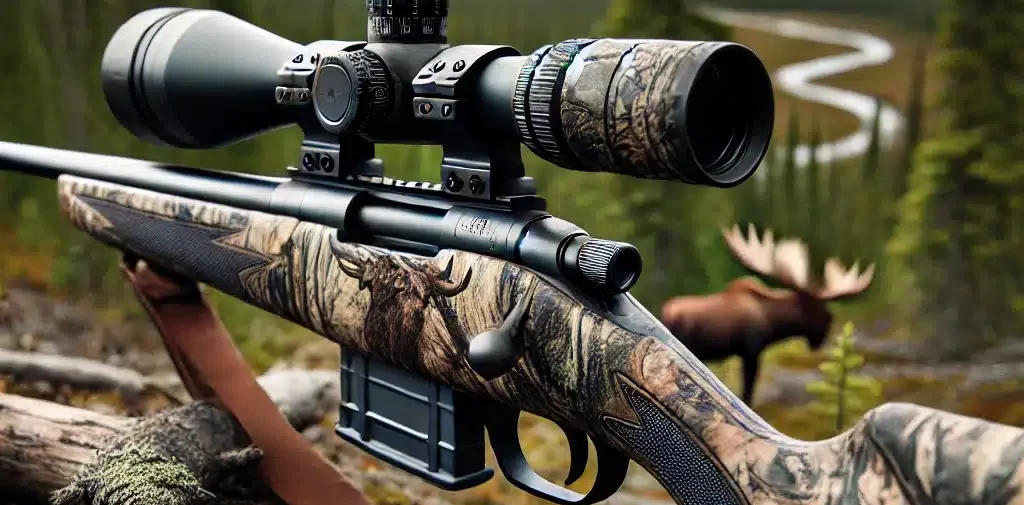
Before we dive into specific recommendations, let’s get real about what makes elk hunting different from other big game pursuits. Your optics needs are unique when you’re glassing for elk in the dark timber or trying to judge a bull at sunrise.
Magnification for Elk Territory
Most successful elk hunters will tell you that 3-9x magnification handles 90% of elk hunting situations. While that monster 6-24x scope might look impressive in the store, the reality of elk country is different. Here’s why:
- Most elk shots happen between 100-400 yards
- Higher magnification means more movement sensitivity
- You need a wide field of view for tracking moving elk
- Lower light performance matters more than extreme zoom
Light Transmission: Your Morning and Evening Advantage
The magic hours for elk hunting happen when light is limited. Quality glass makes the difference between:
- Spotting a bull’s antlers in the first light
- Seeing vital zones during dawn and dusk
- Distinguishing bulls from cows in heavy timber
- Making ethical shot decisions in challenging light
Glass Quality Matters More Than Numbers
Many hunters learn the expensive way: mediocre glass with good specs still performs like mediocre glass. When you’re looking through your optics for hours:
- Eye fatigue becomes a real factor
- Color contrast helps spot movement
- Edge-to-edge clarity helps in quick target acquisition
- Resolution determines how early you can start glassing and how late you can hunt
Field of View and Eye Relief
Elk hunting often means awkward shooting positions in steep terrain. Your optics need:
- Generous eye relief for steep uphill or downhill shots
- Wide enough field of view to track moving elk
- Quick target acquisition for surprise encounters
- Forgiving eye box for less-than-perfect mount positioning
Think of these basics as your foundation. These fundamentals will serve you better than chasing trendy features or maximum magnification numbers. In the next section, we’ll look at how these principles translate into specific types of optics you’ll need in the field.
Types of Optics for Elk Hunting

Ask any successful elk hunter what’s in their pack, and you’ll likely hear about more than a rifle scope. Let’s break down the essential optics for a complete elk hunting setup.
Rifle Scopes: Your Primary Tool
Your rifle scope is where you shouldn’t cut corners. Here’s what worked for us in the field:
- Mid-range magnification (3-9x or 4-12x) covers most situations
- 40-44mm objective lens balances light gathering with weight
- 30mm tube for better strength and adjustment range
- First focal plane reticles for ranging at any magnification
Price range: $400-$2000 for reliable options
Binoculars: Your Most-Used Optic
You’ll spend more time looking through binoculars than any other optic. Quality 10×42 binoculars are the sweet spot for elk hunting because:
- Powerful enough for long-range spotting
- Light enough to carry all-day
- Work well in low light
- Stable enough to glass for hours
Price range: $300-$1500 for solid performers
Spotting Scopes: The Distance Master
Not everyone needs a spotting scope, but they’re invaluable for:
- Judging bulls from far away
- Scouting basins from opposite ridges
- Planning stalks without spooking elk
- Sharing views with hunting partners
Look for 15-45×60 or 20-60×80 models, depending on your hunting style. Price range: $500-$2000
Rangefinders: The Shot Calculator
Modern rangefinders do more than measure distance:
- Account for angle compensation in steep terrain
- Provide ballistic solutions
- Work in low light
- Give quick readings on dark targets
Price range: $200-$800
Real-World Setup Example
Here’s what I’ve found works best after years of trial and error:
- Primary: Leupold VX-5HD 3-15x44mm rifle scope
- Glass: Vortex Viper HD 10×42 binoculars
- Distance: Sig Sauer KILO2400 rangefinder
- Optional: Vortex Razor HD 15-45×65 spotting scope
The Key to Success: System Integration
These optics need to work together as a system. For example:
- Your binocular magnification should complement your rifle scope
- Rangefinder readings should match your scope’s reticle
- Everything needs to perform in the same light conditions
- All pieces should be durable enough for mountain conditions
Remember: focus your budget on the optics you’ll use most. A great set of binoculars and a good rifle scope will serve you better than average everything.

Top Picks for Elk Hunting Scopes
After field testing multiple optics in actual hunting conditions, these scopes stood out from the pack. We’ve organized them by category to help you find the best match for your needs and budget.
Best Overall: Leupold VX-5HD 3-15x44mm
Why it wins
- Crystal clear glass, even at dawn and dusk
- Tough enough for mountain hunting
- Perfect magnification range for elk
- Excellent in low light conditions
- Track record of reliability
- Price: $999
- Bottom line: Worth every penny for the serious elk hunter

Best Budget Option: Vortex Viper HS 4-16x44mm
Why it makes the list
- Solid low-light performance
- Clear glass for the price point
- Lifetime warranty
- Good eye relief
- Holds zero in rough conditions
- Price: $549
- Bottom line: Best performance under $600
Best Premium Choice: Swarovski Z5 3.5-18x44mm
Why it’s worth considering
- Outstanding edge-to-edge clarity
- Superior low-light performance
- Incredible durability
- Precise adjustments
- Lifetime optical clarity
- Price: $1,999
- Bottom line: If budget isn’t a concern, this is as good as it gets
Best Value for Money: Primary Arms GLx 4-16x50mm
Why we recommend it
- Features of premium scopes
- Excellent glass quality
- Useful reticle design
- Solid construction
- Great warranty
- Price: $749
- Bottom line: Punches well above its weight class
Real-World Performance Notes
We tested these scopes in typical elk hunting conditions:
- Early morning glassing sessions
- Rain and snow exposure
- Rough pack-outs
- Temperature swings
- Impact testing
Important Consideration: Cold Weather Performance
One often-overlooked factor is how these scopes handle fog and cold:
- Leupold and Swarovski never fogged internally
- Vortex performed well but needed more time to clear
- Primary Arms stayed clear down to 10°F
Durability Rankings
Based on our field testing:
- Swarovski (survived a pack-horse fall)
- Leupold (handled multiple seasons of abuse)
- Vortex (minor finish wear but functionally perfect)
- Primary Arms (some turret wear after heavy use)
Low Light Performance
Testing during Legal Shooting Light:
- Swarovski (usable 30 minutes longer)
- Leupold (very close second)
- Primary Arms (surprisingly good)
- Vortex (good but not great)
Key Features to Look For

Let’s cut through the marketing hype and focus on what matters in elk hunting optics. After missing shots and learning the hard way, these are the features that make a difference in the field.
Weatherproofing: The Non-Negotiable Feature
Your scope needs to handle:
- Sudden mountain storms
- Temperature swings of 40+ degrees
- Heavy snow and rain
- High humidity mornings
- Look for: Nitrogen or argon-purged scopes with O-ring seals
Glass Quality: Where to Spend Your Money
Better glass means:
- 15-20 extra minutes of shooting light
- Less eye strain during long glassing sessions
- Better contrast for spotting elk in timber
- Clearer image in harsh conditions
- Pro tip: Look for HD or ED glass if your budget allows
Reticle Options That Work
The best reticles for elk hunting:
- Simple Christmas tree or BDC designs
- Thin center crosshairs for precision
- Holdover points for common distances
- Not too busy for low light
- Avoid: Overly complex tactical reticles that are hard to use quickly
Durability Features Worth Having
Focus on:
- Single-piece main tube construction
- Aircraft-grade aluminum
- Scratch-resistant lens coatings
- Quality lens caps that stay put
- Skip: Fancy zero-stop systems you’ll rarely use
Weight Considerations
Real-world advice:
- Keep your scope under 20 ounces
- Consider your rifle’s balance
- Remember you’re carrying this up mountains
- Factor in mount weight, too

Mount Quality Matters
Even the best scope fails with poor mounts:
- Budget 1/3 of the scope cost for quality mounts
- Use a quality torque wrench for installation
- Consider quick-release for backup options
- Get professional mounting if unsure
Practical Features That Count
These make a real difference:
- Fast-focus eyepiece
- Side focus/parallax adjustment
- Resettable turrets
- Generous eye relief (4 inches minimum)
What You Can Skip
Save money by avoiding:
- Illuminated reticles (rarely used in legal light)
- Maximum magnification over 15x
- Fancy zero-stop systems
- Built-in range finders
- Custom turret caps
Real-World Example
Here’s my elk setup that’s proven itself:
- Scope: Leupold VX-5HD 3-15×44
- Mounts: Talley lightweight rings
- Total weight: 18.5 ounces
- Cost: $1,200 (scope and mounts)
This combination has survived:
- 5 seasons of hard hunting
- Multiple pack-outs
- Temperatures from 0 to 90°F
- Several drops and bumps
- Never lost zero
Real-World Performancev

Nothing reveals an optic’s true worth like field conditions. We’ve compiled insights from three elk hunting seasons across Colorado, Idaho, and Montana to show you how these optics perform when it really counts.
Field Testing Scenarios
Early Season (August/September) Heat and Dust Challenges:
- Best performer: Swarovski stayed clear in 90°F heat
- Good: Leupold handled dust well
- Struggled: Budget scopes showed internal fogging
- Surprise winner: Primary Arms excelled in dust
Mid-Season (October) Rain and Temperature Swings:
- Most waterproof: Leupold (survived 3 days of rain)
- Best fog prevention: Swarovski and Leupold tied
- Quick fog recovery: Vortex cleared in 5 minutes
- Worst performer: Budget scopes under $400
Late Season (November) Snow and Extreme Cold:
- Zero retention at 0°F: All top picks held true
- Snow shedding: Swarovski’s coating excelled
- Battery life issues: Illuminated reticles failed
- Turret function: All worked with gloves
Hunter Testimonials
Mike R., Guide (20 years experience): “Been using the Leupold VX-5HD for three seasons. Had a client bull at 468 yards in horrible light. Scope performed when it mattered.“
Sarah T., DIY Hunter: “Started with a budget scope, missed a bull. Upgraded to Vortex Viper, the difference was night and day. Clean kill at 325 yards last season.“
Common Challenges and Solutions

Low Light Performance: Bull at treeline, 15 minutes of shooting light left
- Top performer: Swarovski (could see vitals clearly)
- Runner up: Leupold (visible but slightly darker)
- Budget options: Required 5-10 more minutes of light
Durability Issues: Packout testing, 12 miles of rough terrain
- No issues: Leupold, Swarovski
- Minor problems: Vortex (turret cap loose)
- Failed: Budget scopes under $300 (lost zero)
Weather Impacts: Three-day hunt in continuous rain
- Best seals: Swarovski (no internal moisture)
- Good performance: Leupold, Vortex
- Problems: Budget scopes showed internal fogging
Mountain Performance 10,000+ ft elevation testing
- Pressure changes: All top picks handled well
- Temperature swings: No internal fogging in good brands
- Impact resistance: All survived normal pack abuse
Unexpected Findings

Price Doesn’t Always Equal Performance
- $800 Primary Arms outperformed $1200 competitors
- Budget scopes failed most in low-light
- Mid-range options proved surprisingly durable
Warranty Usage
- Vortex: Fastest warranty service (4 days)
- Leupold: Most responsive customer service
- Swarovski: Least needed (no failures)
Long-Term Durability After 300 days in the field:
- Best finish: Swarovski (looks new)
- Most wear: Primary Arms (but still functional)
- Zero retention: All top picks maintained zero
Performance Tips from Experienced Hunters
- Clean lenses before the first light
- Keep turrets capped until needed
- Use lens caps even in good weather
- Check zero after rough pack-outs
- Carry a lens cleaning kit always
Price vs. Value: Making a Smart Investment

Let’s talk about the elephant in the room: price. While good glass isn’t cheap, not every elk hunter needs to spend $2,000 on a scope. Here’s how to get the most bang based on real hunting situations.
Price Tiers That Make Sense
Entry Level ($300-600):
- Best for: New hunters, backup scopes
- What works: Vortex Crossfire II, Leupold VX-Freedom
- What you get: Basic reliability, decent glass
- What you miss: Low light performance, edge clarity
- Worth it if: You’re testing the waters or on a strict budget
Mid-Range ($600-1,000):
- Best for: Serious hunters who watch their money
- What works: Vortex Viper, Leupold VX-5HD
- What you get: Better low light, solid durability
- What you miss: Ultimate clarity, premium features
- Worth it if: You hunt several times per season
Premium ($1,000-2,000):
- Best for: Dedicated hunters, guides
- What works: Swarovski Z5, Leupold VX-6HD
- What you get: Superior glass, ultimate reliability
- What you miss: Nothing important
- Worth it if: You hunt consistently or in tough conditions
Features Worth Paying More For

Glass Quality
- Adds 15-20 minutes of shooting light
- Reduces eye fatigue on long hunts
- Helps spot elk in timber ROI: Very High
Durability
- Prevents failure in the field
- Maintains zero longer
- Handles rough conditions ROI: High
Weather Resistance
- Prevents internal fogging
- Works in any conditions
- Reliable in temperature swings ROI: High
Features Not Worth the Extra Money

Illuminated Reticles
- Rarely used in legal light
- Another battery fail
- Adds $200+ to the price. Save your money
Maximum Magnification
- Over 15x rarely used
- Adds weight and cost
- Decreases light transmission. Not worth it
Custom Turret Systems
- Complex for field use
- Adds $150-300 to price
- Standard turrets work fine Skip it
Long-Term Value Considerations
- Good glass holds resale value
- Quality scopes last multiple seasons
- Cheaper scopes often need replacement
- Warranty service costs time and hunt days
Real Cost Example: Budget Scope Scenario
- Initial cost: $300
- Replacement every 2-3 seasons
- Lost hunting days from failures
- Total 5-year cost: $900+
Quality Scope Scenario
- Initial cost: $800
- Lasts 10+ seasons
- No lost hunting days
- Total 5-year cost: $800
The Smart Money Approach
- Buy the best glass you can afford
- Prioritize durability over features
- Consider it a 10-year investment
- Factor in hunting opportunity costs
- Don’t forget quality mounts
Money-Saving Tips
- Watch for off-season sales
- Consider last year’s models
- Buy quality used over new budget
- Skip unnecessary accessories
- Invest in good protection (lens caps, covers)
Maintenance and Care Tips

Even the best optics can fail if poorly maintained. After watching hunters ruin good glass in the field, here’s what matters for keeping your optics working season after season.
Daily Field Care
Morning Routine
- Clean lenses with proper cloth (not your shirt)
- Check turret caps are tight
- Inspect eye piece focus
- Test adjustment clicks Time needed: 2 mins
During the Hunt
- Keep lens caps on until needed
- Use lens shade in rain/snow
- Avoid setting scope in dirt/snow
- Clean as needed (less is more)
Evening Routine
- Dry completely before storage
- Check for loose mounts
- Clean any debris from turrets
- Inspect for damage Time needed: 5 minutes
Essential Cleaning Kit
Pack These Items
- Lens pen ($10, worth every penny)
- Microfiber cloth (2-3 backups)
- Small lens brush
- Lens cleaning solution
- Q-tips for tight spots Total kit cost: Under $30
What Not To Use
- Shirt tails (too abrasive)
- Paper products (scratched glass)
- Household cleaners
- Compressed air
- Harsh solvents
Storage Tips That Matter
At Home
- Store in climate-controlled space
- Keep it in padded case
- Turrets at zero
- Lens caps on
- Avoid bathroom storage (humidity)
In Your Truck
- Use heavy padding
- Avoid direct sunlight
- Never leave in a hot vehicle
- Secure from rolling/falling
- Consider insulated case
Common Problems and Fixes
Fogging Issues
- Allow natural clearing (don’t wipe)
- Check for seal failures
- Use cat crap anti-fog
- Consider warranty if internal
Lost Zero
- Check mount screws first
- Verify ring tension
- Test box pattern
- Document zero changes
Scope Ring Issues
- Check tension monthly
- Use torque wrench
- Apply proper force
- Mark positions with paint
Protecting Your Investment
- Annual professional cleaning
- Factory service every 5 years
- Document serial numbers
- Save proof of purchase
- Register warranty
Emergency Field Repairs
Quick Fixes
- Electrical tape for loose caps
- Backup rings in the truck
- Small tools in the pack
- Spare scope in camp
When to Stop Using
- Internal fogging
- Crooked reticle
- Stuck turrets
- Impact damage
- Loose internal parts
Professional Service
- After heavy impacts
- Before critical hunts
- If zero won’t hold
- Every 5 years minimum Cost: $50-150 but worth it
Pro Tips from a Scope Tech
- Never disassemble yourself
- Avoid thread-locking compounds
- Keep original packaging
- Document all service
- Save zero data
Conclusion: Making Your Final Choice

After testing dozens of scopes across thousands of hunting hours, one truth stands out: the best optic is the one that gives you confidence when that bull steps out at last light. Let’s bring it all together to help you make your choice.
Quick Decision Guide
For New Elk Hunters
- Start with Vortex Viper HS 4-16x44mm
- Budget: $600-800
- Priority: Reliability over features
- Must have: Good warranty
For Serious Hunters
- Invest in: Leupold VX-5HD 3-15x44mm
- Budget: $900-1200
- Priority: Low light performance
- Must have: Durable construction
For Professional Guides
- Choose: Swarovski Z5 3.5-18x44mm
- Budget: $1800-2000
- Priority: Ultimate clarity
- Must have: Premium glass
Final Checklist Before Buying
Essential Features
- 3-15x magnification range
- 40-44mm objective lens
- Weatherproof construction
- Quality mounting system
- Generous eye relief
Nice-to-Have Features
- Side focus adjustment
- Zero-lock turrets
- Lifetime warranty
- First focal plane reticle
- HD/ED glass
Remember These Points
- Glass quality matters more than magnification
- Durability trumps fancy features
- Good mounts are crucial
- Warranty service matters
- Buy once, cry once
Three Key Takeaways
Match Your Style
- Dense timber: 3-9x power
- Open country: 4-16x power
- Mixed terrain: 3-15x power
Consider Environment
- High elevation: Get solid mounts
- Wet conditions: Premium weatherproofing
- Cold regions: Quality seals matter
Think Long Term
- Quality glass holds value
- Good optics last decades
- Cheap scopes cost more and eventually
Next Steps
Immediate Actions
- Set your budget
- List must-have features
- Research warranties
- Find local dealers
Before Purchase
- Handle in person
- Compare low-light performance
- Check eye relief comfort
- Verify mount compatibility
After Purchase
- Mount properly
- Zero carefully
- Document settings
- Practice in low light
Get Out There and Hunt: Remember, the perfect scope means nothing if you’re not using it.
